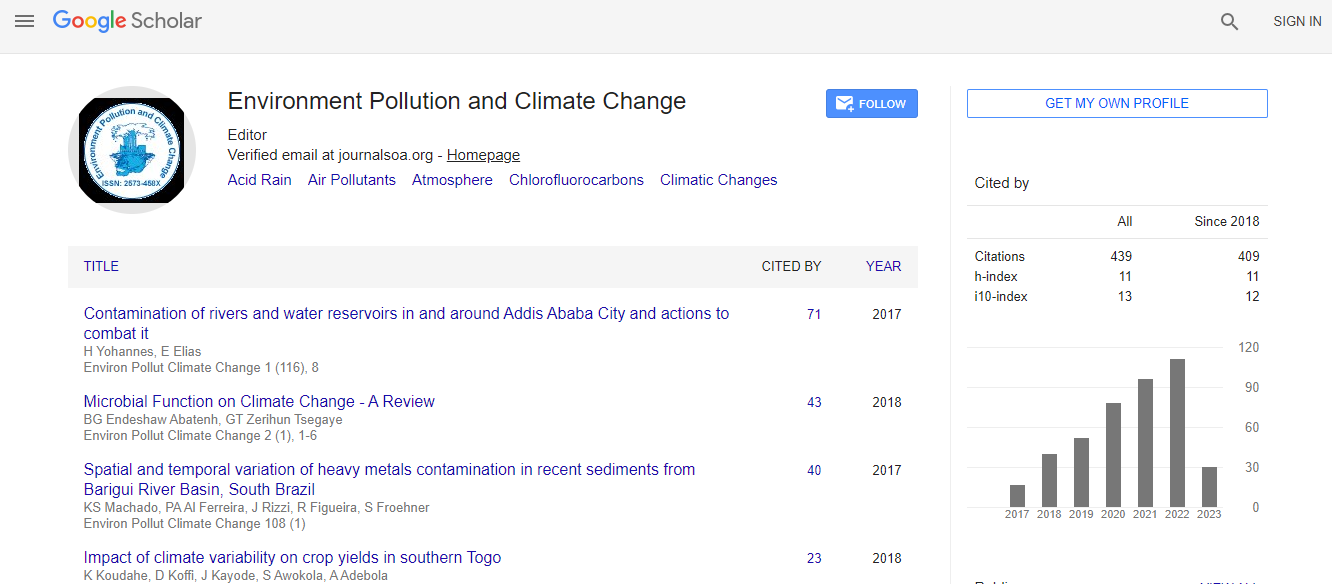Research Article
Use of Protozoa for Assessing Water Quality in a Humid Subtropical Urban Wetland Ecosystem, Southern China
Cuicui Hou1, Xinlu Shi1*, Guijie Liu1, Songlu Liu1, Xiaowen Zhu1 and Henglong Xu2*1Hang Zhou Key Laboratory for Animal Science and Technology, and Laboratory of Experimental Animal Science, Hang Zhou Normal University, Hang Zhou 310036, China
2Laboratory of Microbial Ecology, College of Marine Life Science, Ocean University of China, Qingdao 266003, China
- *Corresponding Author:
- Xinlu Shi
Hang Zhou Key Laboratory for Animal Science and Technology
and Laboratory of Experimental Animal Science
Hang Zhou Normal University
Hang Zhou 310036, China
Tel: +86 15868472538
E-mail: shixl56@163.com - Henglong Xu
Laboratory of Microbial Ecology
College of Marine Life Science Ocean University of China
Qingdao 266003, China
Tel: +86 532 8203 2082
E-mail: henglongxu@126.com
Received date: October 25, 2016; Accepted date: November 17, 2016; Published date: November 24, 2016
Citation: Hou C, Shi X, Liu G, Liu S, Zhu X, et al. (2016) Use of Protozoa for Assessing Water Quality in a Humid Subtropical Urban Wetland Ecosystem, Southern China. Environ Pollut Climate Change 1:105
Copyright: © 2016 Hou C, et al. This is an open-access article distributed under the terms of the Creative Commons Attribution License, which permits unrestricted use, distribution, and reproduction in any medium, provided the original author and source are credited.
Abstract
Multivariate bioassessment based on community data has many advantages to assess environmental quality status in aquatic ecosystems. However, there are few reports on their use for bioassessment in subtropical wetland systems. In this study, the protozoan microfauna and their use in evaluating water quality status was investigated in a humid subtropical urban (XiXi) wetland system in southern China, during the period of June 2013-May 2014. Samples were collected every month at six sampling stations within different pollution/eutrophication levels. A total of 85 protozoan species were recorded, including 67 ciliates, 10 flagellates, 8 sarcodines. A clear variation on spatial scale in protozoan community structures were represented at the six stations. Multivariate approaches revealed that the variations in the community structure were significantly related to the changes of environmental variables, especially nutrients ammonia-N (NH4-N), nitrate-N (NO3-N) and total phosphorus (TP), alone or in combination with water temperature (T) and dissolved oxygen (DO) and Four dominant species (Euglena acus, Cucurbitella mespiliformis, Codonella acutula and Hemiophrys punctata) were significantly correlated with nutrients. Otherwise, the species richness, diversity and evenness indices represented significant correlations with the nutrients. The results demonstrate that the community-based bioassessment using protozoa may be used as a feasible protocol for determining the water quality status and human disturbance in a humid subtropical urban wetland system.

 Spanish
Spanish  Chinese
Chinese  Russian
Russian  German
German  French
French  Japanese
Japanese  Portuguese
Portuguese  Hindi
Hindi 
